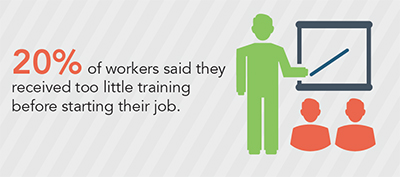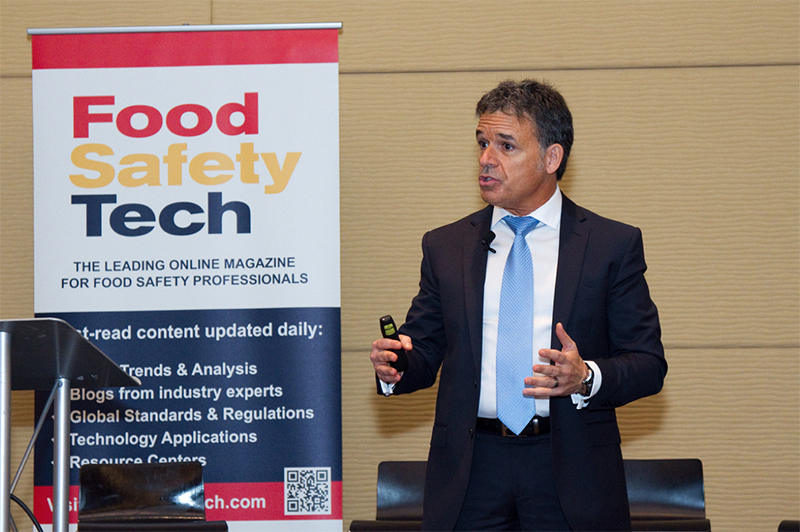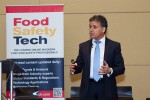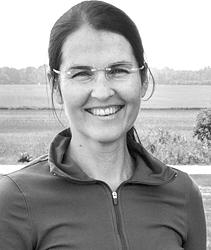Food safety and quality professionals are change agents and problem solvers. It is what we do. The manner in which people within an organization respond to change, problems and opportunities for improvement is a reflection of the food safety culture of the organization. Does your organization celebrate when someone correctly decides to shut production down or put a product on hold? Obviously, it is always best to prevent any issues before they arise, but stopping a line to prevent bad product from being produced or catching out-of-specification product before it leaves the facility is better than continuing to produce and ship bad product. These events are often viewed as negative occurrences, and, therefore, many do not see the value of the Food Safety/Quality Assurance department.
Elise Forward will be speaking at the 2016 Food Safety Consortium, December 6–7 in Schuamburg, IL | LEARN MOREHow can we change this viewpoint and positively affect the food safety and quality culture of the organization? A few key factors have a great impact on the culture of an organization. People, systems, access to resources and opportunities for growth are all integral pieces of a stellar food safety culture. In this column, the first of a two-part series, we will explore how people build, change and mold the culture.
First and foremost, people are the number one asset and provide the greatest impact to change. Not only are personnel the eyes and ears of an organization, but they also provide the logic required to make good decisions. Computer technology is amazing, but it cannot fully replace the human ability to process the information. People need to be used to their fullest potential in order to obtain the greatest impact. The following are some ways people can be used to boost the food safety culture of an organization.
Everyone is involved in food safety. A team is always stronger than individuals. Everyone, from the C-suite to the third-shift person in charge of the employee refrigerator and taking out the trash, to the office staff that answers the phones and opens the mail, needs to have responsibility for food safety. In addition, contractors and subcontractors are not immune to providing a significant role in protecting the food safety of your product. All relevant staff must have the appropriate training to understand that what they do affects the food safety of the product as well as the entire facility. Having everyone trained means that many then share the food safety mentality and, therefore, there are stopgaps in the system. As with many issues, it is not one breakdown of the system that leads to a failure but a culmination of many breakdowns. People are still the strongest asset to food safety, so having multiple stopgaps (i.e., people), involved in protecting the process will help ensure that the product remains safe.
Executive responsibility. The responsibility of the overall food safety of products leaving the facility now lies with the executives, as seen by the recent cases involving Peanut Corporation of America, DeCosters and Jensen brothers. Executives and decision makers are accountable for the presence of or lack of appropriate food safety measures. Therefore, when making changes, executives need to understand that these are personal decisions that could affect themselves and their family, in addition to customer confidence as well as profits and losses. Questions such as, “What happens if their name is plastered on the evening news?” and “How will your customers, investors, consumers react if the company has a problem?” should be asked.
Evaluate any decision for food safety consequences. Food safety and quality is directly related to profits and losses. Any issue or change that arises must be evaluated to determine if there are any impacts to food safety. For example, the purchasing department must understand that the items purchased and used on the production floor impact food safety. Therefore, food safety should be on every agenda and part of every decision. This can be as simple as adding to the bottom of every agenda the question, “Is there any way that food safety will be impacted?” The C-suite members should be included in management meetings where additional food safety discussions occur.
Employee trust. Employees must be trusted to keep the product safe in order to safeguard the business and the products. It is human nature to take pride in the work that we are assigned and to strive for excellence. People feel rewarded when they are trusted and will continue to add value to the organization by striving for continuous improvement. This translates to greater attention to food safety and quality.
If an employee cannot be trusted, this person should not be on the payroll. The Food Defense rules specifically require a company to address intentional adulteration from an internal entity. To ensure quality, background checks should be completed on every employee, contractor or sub-contractor who has access to critical areas of the facility.
Food safety should be in every job description. Food safety is everyone’s job, so update job descriptions to include pertinent responsibilities to food safety. At a minimum, everyone should have the “See something, say something” responsibility in his or her job description, in addition to anything specifically related to his or her job. Likewise, it can be valuable to have an independent set of eyes to evaluate a system. Therefore, train and use all personnel that do not have a background in food safety and quality. Departments such as accounting, warehouse, maintenance and personnel should be trained to perform GMP and sanitation audits. Spread these tasks around and your systems will benefit. The people performing the tasks will take pride at being trusted with these important responsibilities and tasks.
While a company or organization may start in an undesirable situation, it is possible to change the environment. Remember, the people you work with are your greatest asset. Value these people; uplift, teach and coach them in the ways of food safety and quality. Your efforts will produce astounding results! In the second half of the discussion on food safety culture, we will discuss other facets that influence food safety culture.




















